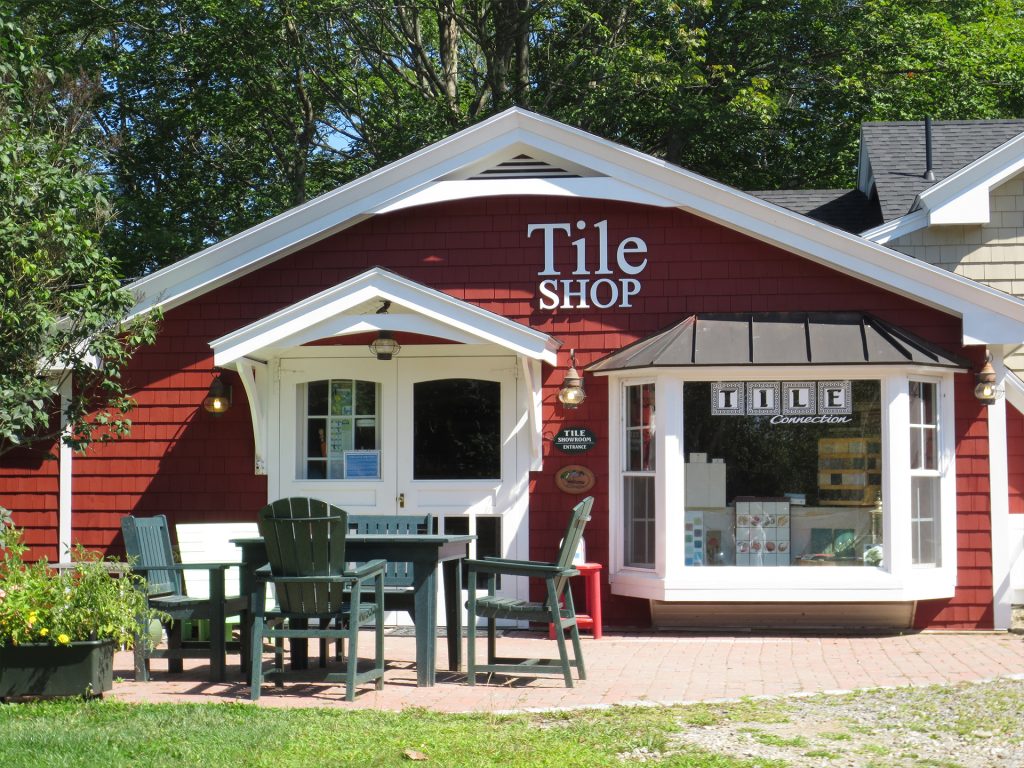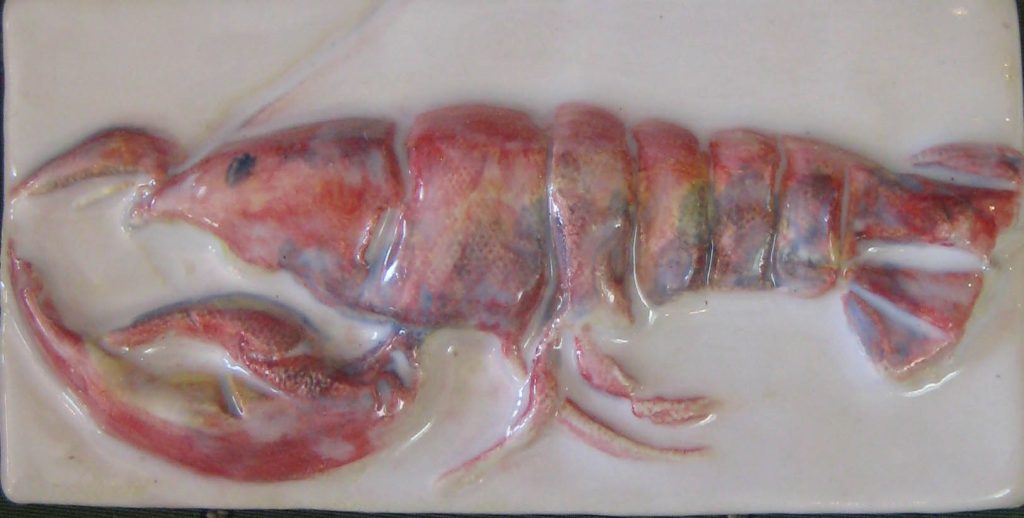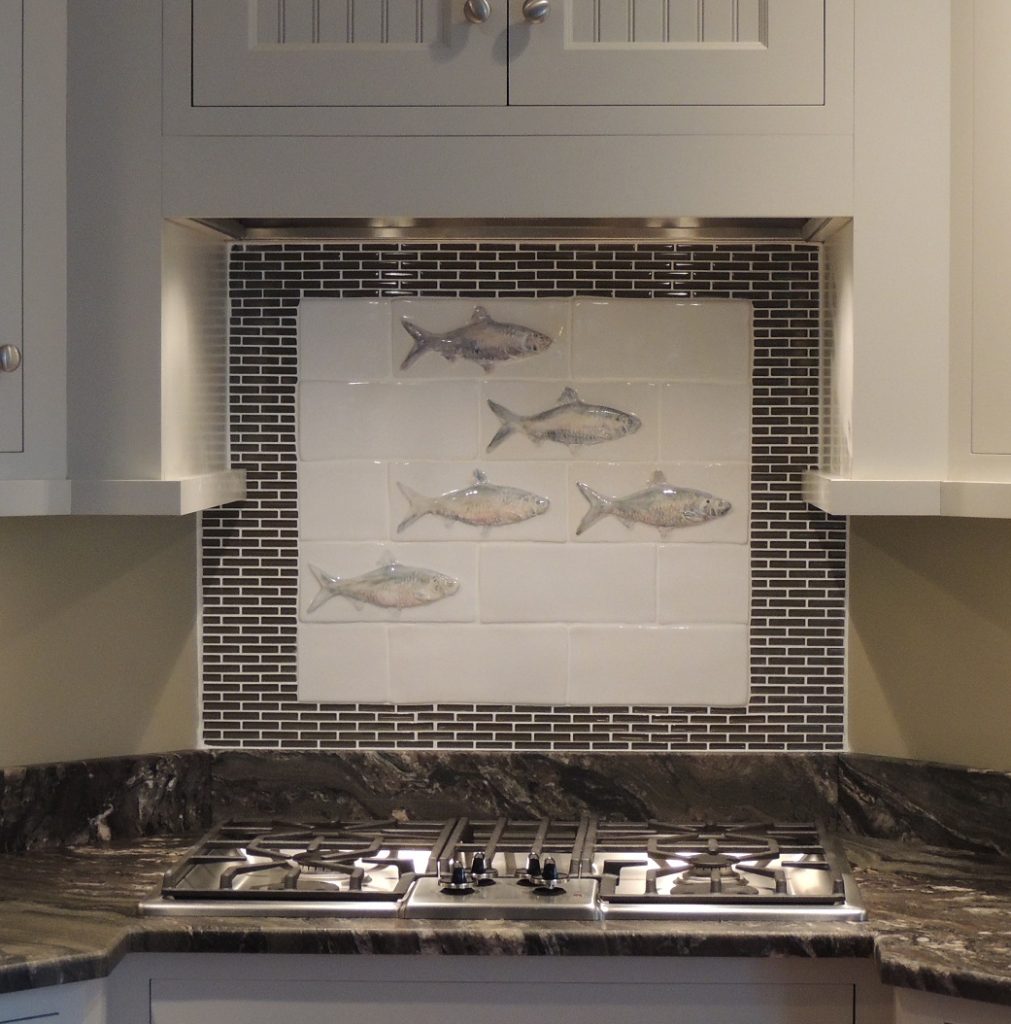
Our Tiles
Add Depth, Durability and Beauty
If you want to see beautiful, unique tile products that you probably will not see anywhere else, you should make a day of it. Come to Boothbay, eat lunch (lobster roll) by the ocean in Boothbay Harbor and come to the Shop.
At our shop, you enter a place where beautiful tiles, passionate people and unique ideas come together! We welcome interior designers, especially kitchen and bath designers. We invite you to come in and browse. Come see how Audrey can help you use this durable, beautiful, natural material to enrich your life.

Lobster Relief Tile
Maine Tile Connection's Exclusive 3x6 Tile
Meet the Authentic Maine lobster, Homarus Americanus.
Maine lobstermen harvest the majority of their lobsters during the time when lobsters are shedding their old shells. Consequently, this yields an annual crop of new shell lobsters primarily between July and October. The more delicate new shell lobsters are difficult to ship long distances. As a result, you have to come to Maine (or at least New England) to experience this delicious seafood. Similarly, this tile is made in Maine. Lastly, there is a full line of tile and field tiles to go with this lobster tile.
To Order: $40 plus tax and shipping

Alewife Tile
Exclusive to Maine Tile Connection
What are Alewives?
Alewives are anadromous (sea-run) fish that spend the majority of their life at sea. However, they later return to freshwater to spawn. Alewives have co-evolved and co-existed with other native fish and wildlife in Maine’s waters for thousands of years. Additionally, they are members of the herring family; their close cousins are shad and blue back herring. Alewives have slender bodies, and they normally grow to 10”-11” in length, and weigh about half a pound.
Repeat spawners can be as large as 14” and weigh a pound or more. Furthermore alewives are grayish green on their back, and silvery on their sides and belly. Forked tails and a single black spot behind their eye is it’s signature.
n short, the bad news is that many Mainers have never seen an alewife run. This is because Maine’s historically thriving alewife population has plummeted during the last two centuries. Dams, pollution and over fishing have taken their toll. Southern Maine’s Alewife Brook, for example, no longer has alewives.



